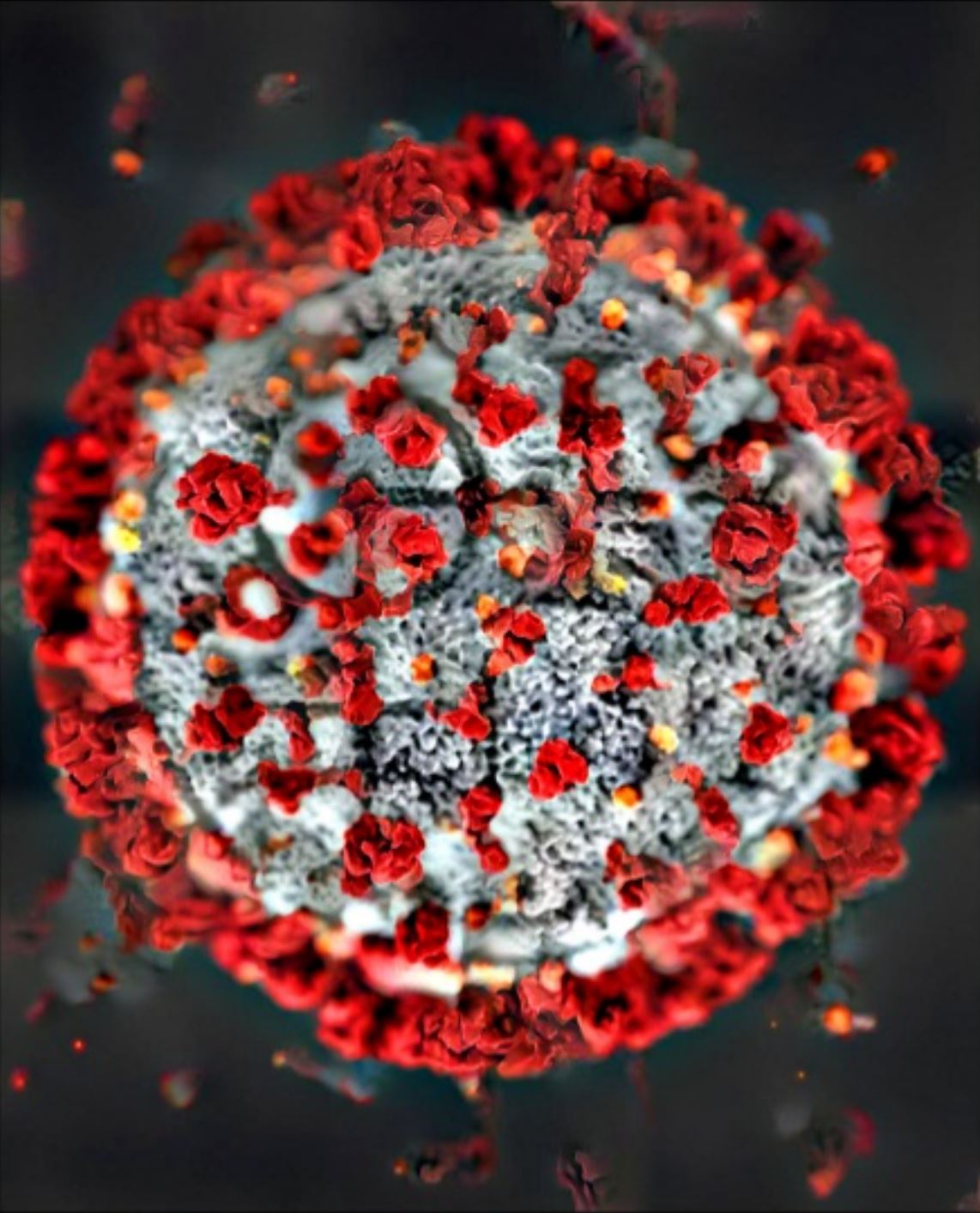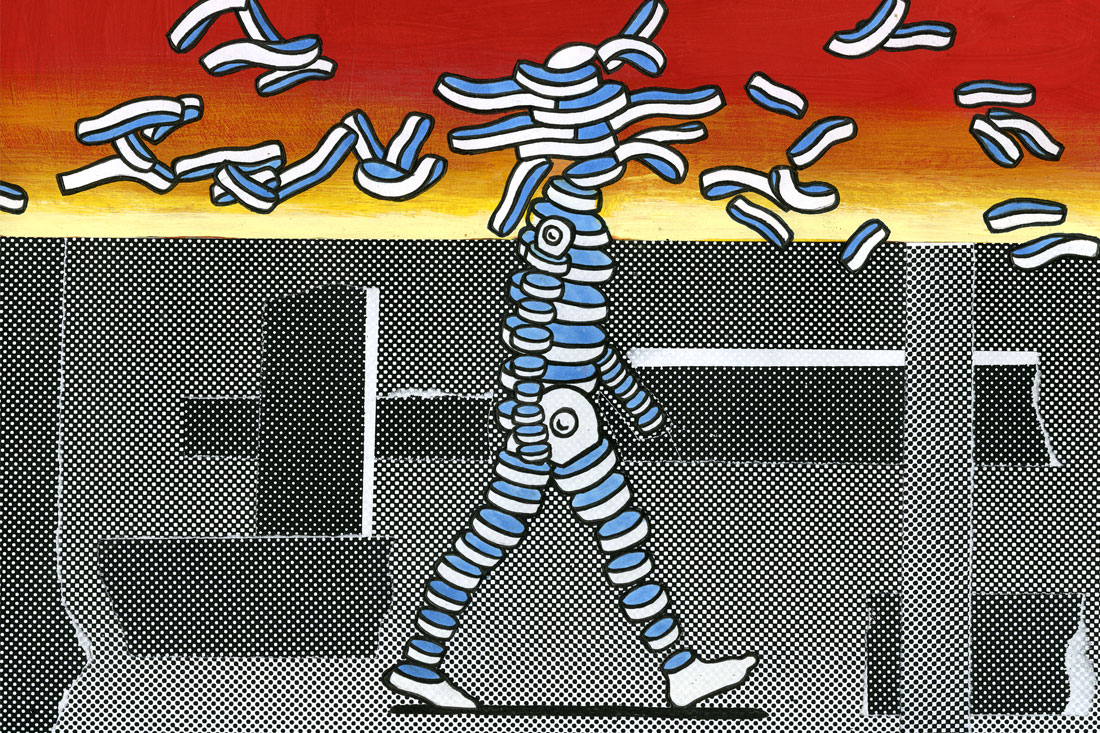Digital America interviewed Ciarán Short in April 2022 about his piece iHope (2021) and the Black Lives Matter movement.

:::
Digital America: Your piece iHope captures moments from the Black Lives Matter protests in 2020 that saw racial tensions come to a break after the tragic murder of George Floyd among countless black people at the hands of the police. It showed tragedy and deep pain in a hopeful manner with a voiceover sparking both sorrow and hope into the hearts of many young viewers including our Digital America team. How did the creation of this piece unfold?
Ciarán Short: During the Summer of 2020, I spent almost every day either marching at protests or planning art-based demonstrations. Seeing the vast crowds that would come to protests day after day in New York City was truly inspiring. I had never felt more confident in myself or proud of my city as I walked down the street in a crowd of hundreds and sometimes thousands gathered for a common purpose.
The tremendous highs were also unfortunately paired with frequent disappointment, as police
often harassed, detained, and assaulted peaceful protesters. In addition, once a protest was over and the crowd dispersed, life returned back to normal and I was once again alone. With the city shut down, I frequently had long walks home, holding a protest sign under my arm. People against the Black Lives Matter Movement were very happy to share their opposing beliefs with very colorful language as I passed by. These moments paired with the depictions of protesters on popular media were very grounding for me, anchoring my optimism with a healthy amount of skepticism.
This piece was born out of the internal struggle of wanting to believe change was imminent and possible while acknowledging the long road ahead in combating racial injustice. Art and media in particular played an integral role in influencing this work, as social media and mainstream news networks predominantly shaped how the BLM movement was perceived. Rather than focusing on fitting into a singular narrative, I set out to use this piece as a mirror reflecting the range of emotions I felt when processing the protests in real-time.
DigA: Progress can be seen as a very abstract concept with different definitions for everyone. Have you seen progress in the racial justice movements over the past few years? If so, where?
CS: I believe there’s been progress made in the past couple of years. It’s important to recognize those strides in order to remain hopeful and recognize the purpose for a continued push towards equality. On a broad level, there’s greater awareness. Even if it can be performative, many white people have at least acknowledged the existence of racism. With this baseline understanding, it’s easier to have open discourse. Additionally, black and non-white perspectives are sought out and highlighted more prominently in art, media, politics, and high-profile businesses. I believe Kamala Harris wouldn’t have been chosen as Vice President and Ketanji Brown Jackson wouldn’t have been nominated as a Supreme Court Justice if it had not been for Black Lives Matter. Although these appointments were obvious political strategies, it doesn’t really matter because history was made by these two black women. Not only do they have the agency to create change from their positions but just their presence will inspire generations to come. I also believe more young people have become politically involved and given a platform through community organizing that they previously would not have had. A direct example of this shift can be seen in the election of Chi Osse, the New York City activist, who was elected to the New York City Council at only 23 years old. With power being more diversified in government and through those casting ballots, I’m optimistic about the continued progress and work that needs to be done. It would be delusional, however, not to recognize the continued inequalities faced by many Americans as political divisions within the country continue to deepen.
DigA: You captured moments of BLM in their darkness and light. How does your piece fill a gap in the artistic representation of the movement, particularly for young Americans?
CS: I set out to challenge sensationalized representations that present only two extremes, flattening the movement into categories of essentially good and bad, depending on where on the political spectrum the viewer lies. When complex emotions are at play, conflicting emotions are often present. In my personal experience, I oscillated from feeling dejected and broken, to optimistic and peaceful, to chaotic and frustrated. Similar to the black experience, there is no singular designation that can capture the experience or momentary feeling for any group sprawling with a diversity of thought, background, class, age, etc. With art being a conduit of emotion, I believe making work that highlights a spectrum of emotions is most effective for the communication of any potential point or message.
DigA: The poem that overlays the visuals is profound in its own right. Lines like “the white boys always the ones to start the fires” and “f*ck sensitivity training” reflect the reality of injustice and the meager attempts to resolve it. Can you talk about your process of writing the poem? Did the images inform the writing?
CS: The poem was initially a living Notes document on my phone that I revisited over the course of about six months, where I captured and jotted down reactions and ideas I had to protests I was at or headlines I saw in the news. I started the text in May 2020, following the murder of George Floyd, and had no intention to do anything with the writing. The note essentially served as a journal for me to just express my thoughts. It wasn’t until January 6th, 2021, when the Capitol Riots occurred that I sat down and decided to finish and assemble my words into a cohesive work. Once the poem was completed, I then looked through my photo and video archives to find visuals and audio that paired well with the text.
DigA: What are your plans for the future? Do you have any more social
action projects planned?
CS: I’m the founder of an arts collective and grassroots activist group called The All Street Journal, which frequently holds demonstrations and leads workshops throughout New York City. Our organization will also be moving into a location on 77 East 3rd Street to serve as a home base for our programming. From this storefront on the Lower East Side, we will be organizing events and exhibitions emphasizing community building and artistic output. The space will open in the summer of 2022.
:::

Ciarán Short is a black artist, writer, and activist born and raised in New York City. His work explores New York culture and tackles issues of race and masculinity. In 2019, he co-founded the All Street Journal, a protest group utilizing art to increase visibility and support the Black Lives Matter movement and housing justice in New York. Additionally, his writing has been featured in publications such as The Independent, Newsday, and Honeysuckle Magazine. He has most recently completed an artist’s residency with Localhost Gallery and has an upcoming photography installation at Cornell University. He will obtain his master’s degree from the New School in the spring of 2022 from the School of Media Studies.



